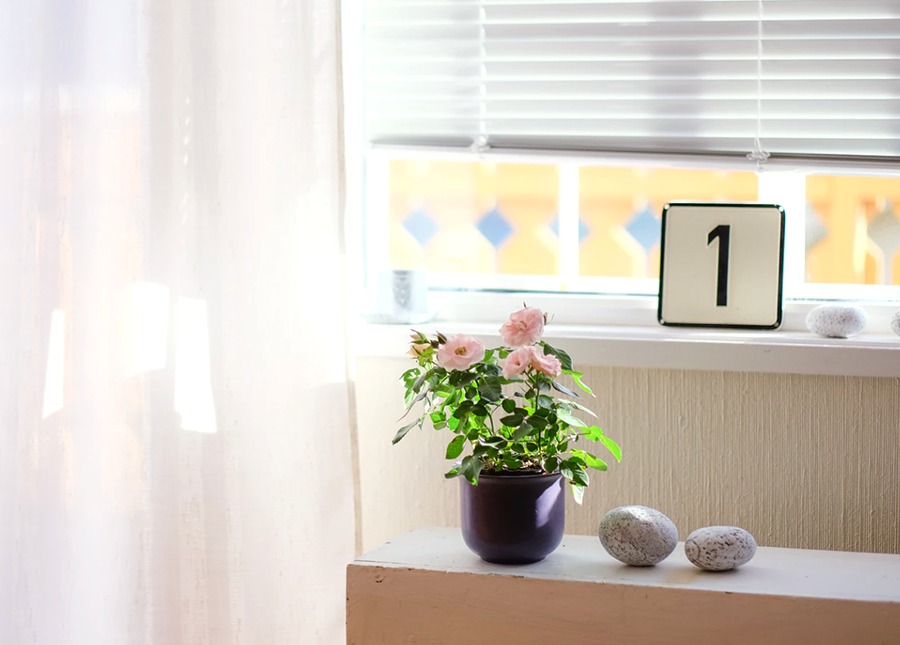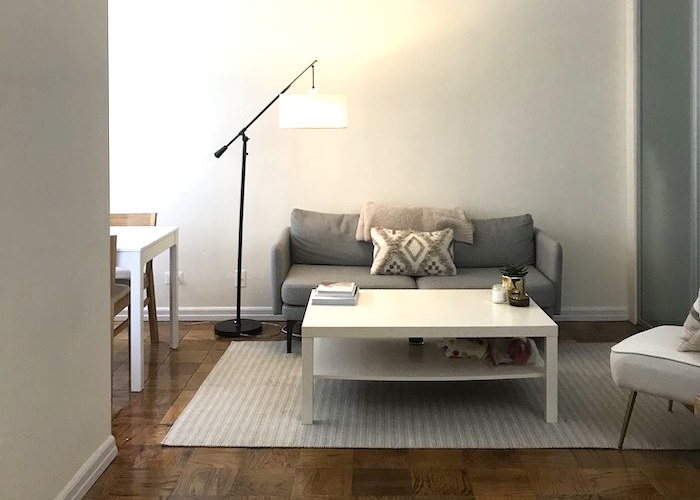3 Simpler-Than-You-Think Ways To Ease Yourself Into A Daily Meditation Routine

In the past few years, it seems like the popularity of meditation has exploded with apps like Headspace and in the personal development world. And that’s great! Meditation has and always will be a great tool for stress personal reflection and development. In addition to that, meditation has a variety of health benefits like:
- Reduces Stress
- Controls Anxiety
- Promotes Emotional Health
- Enhances Self-Awareness
And much, much more.
However, with everyone always talking about the benefits of meditation and why it should be incorporated into your #morningroutine, it can also be overwhelming to get started. While there are lots of apps and information out there, it can still be kind of tough to know what to do beyond closing your eyes. Although I don’t personally use apps like Headspace and Calm, they are a great place to start. The downfall of these types of apps, though, is that they can cost a fee for additional features and meditation is literally an ancient practice that anyone can do. So I want to offer a different approach by sharing what I’ve learned about meditation and how I incorporate it into my daily life. (My journey with meditation has been kind of unconventional, and this advice was mostly given to me by the monks and nuns of Thailand who have spent their entire lives dedicated to faith and meditation.)
Even before I knew that much about it, I had always been fascinated with the practice of meditation. And in my early twenties, I started researching ways to stay at a Buddhist monastery. Personally, my family is Buddhist, but you don’t have to be Buddhist or of any religion to practice meditation or even enter into a monastery. Most monasteries are very open, as long as you are respectful of the religion and practice. Meditation is about spirituality and creating a calm environment. Staying at the monastery was my entrance into the practice, but I like to think I would have tried meditation either way.
So in the spring of 2015, I went to Thailand and spent a week living in a Buddhist monastery where I woke up at 3 AM and spent all day completing chores, meditating, and chanting. In addition to that, I had to cut off all contact with the outside world (including my family) and was only allowed to eat one meal a day. My sister said it sounded like jail, but really, it was a great escape from the noise of the world and swept a breath of fresh air into my life. The experience, while extremely challenging, changed my life in many ways and taught me a lot. The lessons I still use today are the things I learned about meditation. I don’t fully incorporate it into my daily life, but it’s a tool I’m very glad I can rely on when I need to de-stress.
There’s nothing wrong with apps, but as a beginner meditator, there can be a lot of advice that can make it overwhelming. In this article, I’m going to break down the three big lessons about meditation that I didn’t know much about, and what may be preventing you from taking the first steps into this habit. Let’s get started!
1. The secret to clearing your mind
One of the hardest parts of meditation for me was learning to “clear my mind.” I think it’s a common struggle for many people because it really is a lot easier than it sounds. It honestly took me many days of full meditation to finally get it, and it was an uphill battle the whole way there. As I was struggling, I spoke with one of the head monks in the monastery when he asked how I was doing. He explained to me that you don’t actually have to think about nothing, because then you’re actually actively concentrating your mind something — you’re thinking about nothing.
He taught me that the trick to meditation is to actually allow thoughts into your head, and then let them go. And as you further develop your meditation skills, it will get easier and easier. But sitting there telling yourself to think of nothing isn’t helpful, because you’re still actively thinking. He taught me that if a thought enters my head, I can acknowledge it, but then to just let it go. This also particularly helpful when you are sitting and your mind starts thinking about your surroundings. He taught me that this is why monks and nuns don’t necessarily need to be in complete silence to meditate, because they don’t let their surroundings affect them.
This was really important for me to learn, because since I was in Thailand, it was hot and there were mosquitos everywhere. But, because I wasn’t allowed to kill living things in the monastery, including mosquitos, I had to learn how to meditate while being uncomfortably hot and having mosquitos fly dangerously close to my face. This is a skill I’m still working on because I still need a semi-quiet place to meditate, but it’s helpful when I’m upset in a noisy place and need to calm down immediately. I’ve found that it also helps in passing time quicker. When I first started meditating, the time seemed to drag on forever and I’d realize that the eternity was actually only seven minutes. But when I started to learn how to effectively clear my mind, I would blink and an hour would have passed.
I found that one of the most helpful pieces of general advice that does really work to clear my mind is to focus on my breathing. If you really have to think about something, and your mind wanders, try focus on your breathing and then just like all the other thoughts, let it go.
2. You don’t have to be sitting.
When you imagine meditation, you’re probably thinking of someone sitting on the floor, legs crossed with their hands on their knees chanting “ommmmmm, oommmmm, ommmmmm.”
And contrary to popular imaging, that’s not the only way to meditate.
Something I learned while staying in the monastery is that there are different forms of meditation — sitting, standing, walking, and even lying meditation. The monastery practiced 3 out of the 4 forms. We didn’t do lying meditation and thank goodness because I’m pretty sure I would have fallen asleep.
Sitting meditation is what most people imagine when they picture meditation. However, there is no rule on how you sit. When I first entered the monastery, I met with the nun in charge of coordinating and organizing the arrival of outsiders and one of the first things she taught me is how to meditate. She demonstrated the most common way to sit for meditation, but made sure to emphasize that this was not the only way to sit. She advised me that I should just sit in the manner most comfortable for me. While there are common poses, the meditation part is most important, not how you sit
She then continued to explain how many older people actually sit in chairs at the back of the temple to meditate, and that’s perfectly fine too. So if you choose to practice sitting meditation, just sit in whichever way you’re comfortable. The actual position is not what matters, it’s your mindset.
Standing Meditation
Personally, I think standing meditation is my least favorite way to meditate. For me, to sit still while standing is not something I enjoy because my legs tend to get restless. However, this was a part of my daily routine at the monastery as well. I think it was also my least favorite because a monk would also talk to us in Thai at the front of the room. When I asked what he was saying in Thai, he said that he was simply giving relaxing topics to help fall into the state of meditation. I don’t know if it’s because I don’t like the distraction of someone speaking to me or I don’t like standing for long periods of time doing nothing, but this was not for me.
Walking Meditation
Walking meditation was by far my favorite form of meditation. Not only because we got to do it outside in this beautiful garden space, but because I just really like being able to walk and meditate at the same time. At first, it seems a little contradictory because if you are walking — you’re thinking about walking (duh!). But I liked walking meditation because I wasn’t really “walking,” rather I was slowly taking small steps forward. It’s a little difficult to describe the process, but how this works is that they have a tape playing of 4 distinct bell sounds that you move accordingly move your foot to. Each bell symbolizes a particular movement.
For example:
Start with your left foot in front and your weight shifted on your left.
- Bell 1 – Arc your right foot in preparation to take one small step forward.
- Bell 2 – Take one small step forward and place your right foot down. Shift your body weight onto the right foot.
- Bell 3 – Arc your left foot in preparation to take one small step forward.
- Bell 4 – Take one small step forward and place your left foot down. Shift your body weight onto the left foot. Begin at Bell 1 again.
As you can see, you go very, very slowly. And actually, at the temple, we had to line up one after another so it’s incredibly small steps. What I really liked about walking meditation is that I started to learn to separate my mindset from my body. I would step according to the bells but after the first few times, I got the hang out of it (it’s not that hard to distinguish between 4 bells) and it would just become almost automatic. I found a lot of value in learning that I could detach myself from my physical state and still keep a clear headspace while my body was doing something else. This is especially helpful when I’m upset or angry (or on my period) and my face starts getting red as I feel the frustration crawl up my body and I’m about to burst out and cry. I remind myself that I don’t have to let my physical state necessarily dictate my mental state and I am able to calm down easier.
3. Meditation is not just a morning activity.
It’s common for meditation to be a part of a morning routine and there’s a good reason for that. Starting off a busy day with meditation is a great way to clear your mind and kick off the day with a relaxing start. However, it’s not the only time when you can do meditation or even the most beneficial. I find meditation most helpful when I’m in a stressful situation or at the end of the day because I usually wake up really calm (because I am a morning person) and I don’t see the value in me waking up super early to meditate while half asleep (I’m not that much of a working person).
This was something I had to learn to adjust to though while staying in the monastery. There, meditation was truly an all-day activity. I had meditation at 3 in the morning, in the afternoon (different forms of it as discussed before), and at night before bed as well (which often went until about 9 PM). I was also staying at the monastery during a full moon, also known and Buddha Day and there was a day of 24-hour meditation (we were allowed breaks here and there). I couldn’t last a full 24 hours though. I think I went until a bit past midnight and then went to bed (and woke up at 2:45 AM again for 3 AM meditation). Like I mentioned earlier, I wake up very calm, so I didn’t find 3 AM meditations helpful for myself. But the 9 AM and afternoon meditations really helped me stay calm and calm me down throughout the day.
The point is, you can literally meditate anywhere, at any time, and still fully reap the benefits. Meditating in the morning is easy for some people, because it might be the easiest time in a busy household full of roommates, parents, kids, pets, and/or partners. But, not every person is a morning person and quite frankly, it helps no one for you to wake up early, and force yourself to meditate while half asleep.
I know the general advice is to go bed early and wake up early and while I am fully a morning person and prefer that lifestyle, it doesn’t make sense for anyone. If you’re a night owl, meditating at night is just as helpful as in the morning. It calms your body down after a stressful day and helps reduce anxiety. I also meditate in the middle of the day if I find myself having a stressful or bad day. As I mentioned before, you can meditate in many positions – including standing. You don’t have to be sitting cross-legged in the middle of your office, you can go to a quiet space or even the bathroom, set a timer for a few minutes (you still do have to go back to work) and then just start focusing on your breathing and go from there.
Make meditation work for you, not the other way around.
Kimberly is the writer behind www.millenniallifeadmin.com. MLA is a blog that helps break down the everyday adulthood tasks of growing up; one unavoidable responsibility at a time. You can also find her scrolling through memes and sassy posts on Instagram @millenniallifeadmin.
Image via Unsplash




